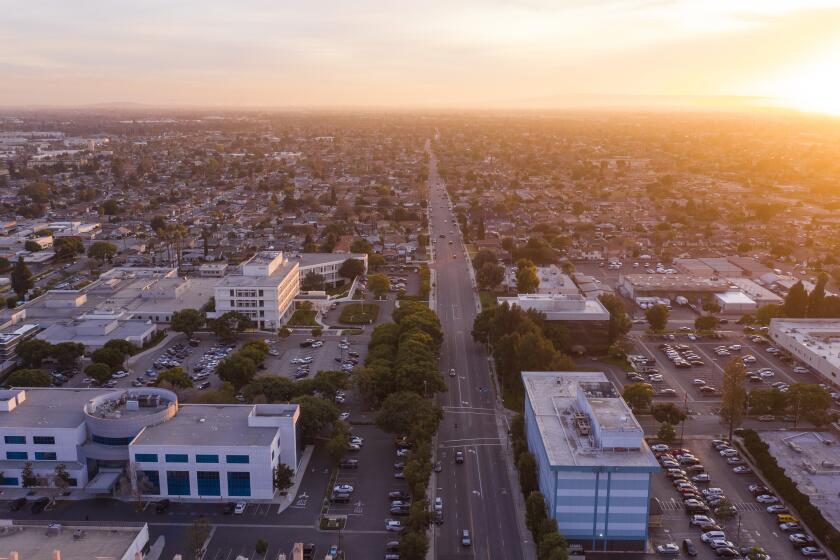Rockwell Resumes Cleanup at Lab’s Old Waste Dump
- Share via
Officials at Rockwell International’s Santa Susana Field Laboratory west of Chatsworth said Thursday they have resumed cleanup of an old waste dump after delays caused by conflicting orders from environmental agencies.
Steve Lafflam, director of environmental protection for Rockwell’s Rocketdyne division, said the company late last week began excavating soil from the contested area of the old dump, known as the sodium burn pit, because tests have shown that the new treatment system will separate the mixed hazardous and radioactive wastes that are buried there.
“It’s a slam dunk,” Lafflam said. “We feel very confident . . . that the treatment process works and that’s why we resumed excavation.”
Lafflam said he expects the firm to lease the mobile treatment device, which would be delivered on flatbed trucks and erected at the Santa Susana test site. The name of the system’s developer would not be disclosed until a contract is signed, he said.
Removal of the two-acre burn pit is part of a $44-million cleanup of contaminated soil, ground water and buildings in a 290-acre area of the field lab where Rockwell performed nuclear work for the U. S. Department of Energy and its predecessor, the Atomic Energy Commission, for three decades.
In what Rockwell officials had described as a “Catch-22 situation,” the company halted the state-ordered removal of soil from a portion of the burn pit more than two months ago to avoid violating federal rules controlling mixed radioactive and hazardous wastes.
State officials have given Rockwell until Dec. 31 to finish cleaning up a part of the burn pit that contains up to 300 cubic yards--roughly 20 dump truck loads--of mixed wastes.
The U. S. Environmental Protection Agency, however, has banned generation of mixed wastes because of a lack of approved sites to dispose of them. Since digging up the pit could be considered generating mixed wastes, Rockwell found itself stuck between the state water board order and the federal rules.
Lafflam, however, said Thursday that small-scale tests conducted in South Carolina have shown that the new technology separates the components of the wastes.
Lafflam said the treatment system converts mercury in the soil to liquid, which can be recycled. Then heat is used to turn chemical solvents to vapors, which are captured by carbon filters. The remaining soil is hardened with binders to keep remaining metal wastes from leaching out. Although the soil would then be considered free of hazardous waste, it would still contain low-level radioactivity, and would be disposed of as radioactive waste, Lafflam said.
Once exhumed from the burn pit, the waste will be placed in metal canisters and temporarily stored at the field lab’s radioactive materials disposal facility--a complex of six buildings where waste is packaged and stored pending off-site disposal.
Lafflam said he expects the treatment apparatus to be assembled at the site within a matter of months. Under federal EPA permits, the company would be allowed to store the waste for up to a year before treating and disposing of it.
State officials applauded the resumption of the cleanup.
“Storing it safely is a much better alternative to leaving it in the ground,” said Florence Pearson, a branch chief with the California Department of Toxic Substances Control in Burbank.
Jim Ross, a senior engineer with the California Regional Water Quality Control Board, which set the Dec. 31 deadline for removing the dump, said the agency is “very pleased, because this has put them back to work and this will allow us to move that pit out of there.”
Lafflam said the treatment system will be covered by high efficiency filters to prevent emissions to the air.
He also said that under terms of its EPA waste storage permit, it may use the treatment system without further review.
Dave Schmidt, a spokesman for the EPA’s San Francisco regional office, said he was uncertain if EPA review is required. Agency officials familiar with the situation could not be reached.
More to Read
Sign up for Essential California
The most important California stories and recommendations in your inbox every morning.
You may occasionally receive promotional content from the Los Angeles Times.













